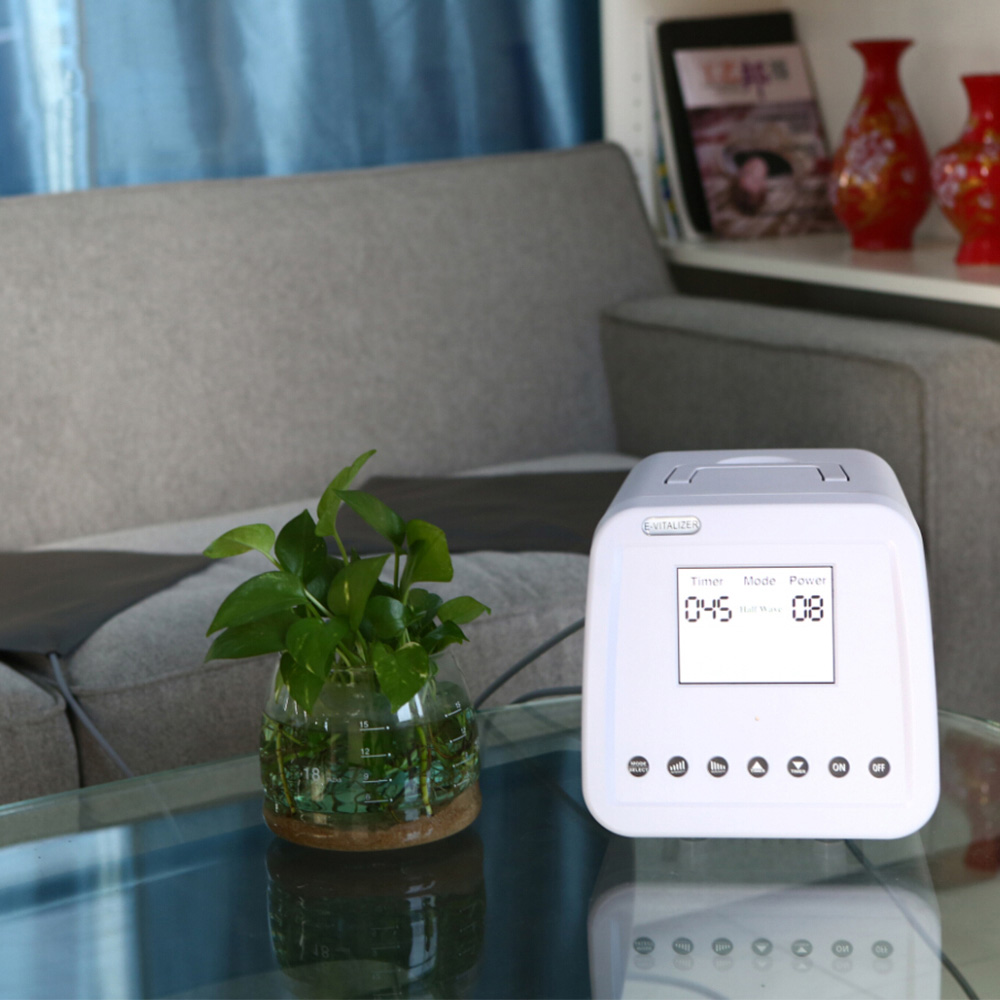Nine technologies such as VR will subvert the medical and health industry
[China Pharmaceutical Network Technology News] The new report "Industry 4.0: Future Productivity and Manufacturing Development Prospects" launched by Boston Consulting Group points out that the interoperability between parts, machines and personnel is increasing, and the speed of production systems The efficiency can be increased by 30% and 25% respectively, and mass customization will also achieve rapid development. So what kind of spark will Industry 4.0 and the pharmaceutical industry collide with? Recently, BCG Consulting released the theme report of “Industry 4.0 – Future Productivity and Manufacturing Development Prospectsâ€, which mentioned the nine pillar technologies that will change productivity in the future. The impact of big technology on the health of medical care is equally and even more significant.
Big data analysis
In the manufacturing sector, analysis based on massive data is on the rise, but it has helped companies optimize production quality, save energy and improve equipment services. In the industry 4.0 environment, the collection and analysis of different data sources (production equipment and systems, as well as enterprise and customer management systems) will become the standard equipment for real-time decision-making in the future.
For example, semiconductor manufacturer Infineon (formerly Siemens Semiconductor) collects the MCU data from the test and correlates it with the data from the early wafer forming stage of the production process, thereby reducing errors in the production process. In addition, the company can identify some typical models, which can eliminate the defective chips in the early stage, thus improving the quality of production.
Pharmaceutical industry
Big data is a very important part of next-generation medical care, and future diagnosis and treatment should be based on data.
Automatic robot
Many industry manufacturers have used robots to perform complex production tasks, but today's robotics technology has become even more powerful. They become more flexible and smarter. In the end, these robots can not only interconnect, but also work safely with humans and even learn new skills from humans. These new robots not only outperform today's industrial robots in performance, but also reduce costs.

For example, the robots produced by European robotic equipment manufacturer Kuka have the ability to communicate with each other. These robots can work together to adjust their actions according to the processes on the production line. These robots are also equipped with advanced sensors and control units that work closely with humans. Similarly, ABB has also launched the dual-arm robot YuMi, which works side-by-side with workers to assemble products (such as consumer electronics). Their computer vision system and the two arms with cushions allow them to not only identify parts, but also ensure safe interaction with people.
Pharmaceutical industry
Robots are being redefined, and many robots have been used in the medical field. It is not a fantasy to participate in the diagnosis in the future.
Analog technology
In the field of engineering design, many companies have adopted 3D simulation technology to design the structure and materials of products. In the future, analog technology will expand to a wider range in plant operations. People can use real-time data to mimic the physical world, including machines, products, and people, and put new products into virtual production environments. Before actual production, the company can test and optimize these new products, reducing equipment assembly time and improving product quality.
For example, Siemens and a machine tool manufacturer have collaborated to develop a virtual machine that can simulate machine parts using real machine data. This system can reduce equipment preparation time by up to 80%.
Pharmaceutical industry
With 3D simulation technology, the internal physiological structure of the human body can be simulated, which is of great significance for remote surgery, drug monitoring, rehabilitation and treatment.
Horizontal and vertical system integration
Most of today's company's IT systems are not fully integrated. Companies, suppliers and customers are often separated from each other. Within the enterprise, engineering design, production, and functional departments are often fighting each other. Even in the engineering design process, few companies can design, manufacture, and automate the Trinity. But with the development of Industry 4.0, companies, departments and functions will become a more compact whole, and a data network across the company will truly automate the value chain.
For example, Dassault Syste?mes and BoostAeroSpace have built a collaboration platform for the European aerospace and defense industry called AirDesign. It provides a shared space for collaboration between design and manufacturing, built on a private cloud where participating partners can interact with complex product and production data.
Pharmaceutical industry
The horizontal and vertical system integration into the hospital is the interconnected HIS system, and the information no longer needs repeated reading and entry to achieve real data access.
Industrial internet of things
Currently, only a few manufacturing companies have sensors and devices interconnected and embedded computing technology. These products are still organized in a vertical pyramid structure with limited intelligence on the sensors and distribution devices in the system, and the controller needs to control the system through a central manufacturing process. However, with the advent of the Internet of Things era, more and more devices, even some semi-finished products, will be equipped with embedded computing technology and interconnected through standard technologies. At that time, product devices in different geographical locations will be able to interact and communicate, and be centrally controlled by the central processor. The Internet of Things will achieve decentralization of decision-making, and connected devices can perform automated analysis and decision-making to react to environmental changes in real time.
Rexroth, a supplier of drive and control equipment from the Bosch Group, has introduced a system of semi-automatic, decentralized production processes. With RFID codes, workstations in different locations can sense the production steps required for each product and automate production.
Pharmaceutical industry
The Internet of Things will have a major impact on drug traceability. Each box of drugs, from the factory to the patient's hands, can be monitored in real time by the central government, and the flow of drugs is no longer a problem.
cyber security
Many companies' management and manufacturing systems are still independent or closed. However, with the advent of Industry 4.0, the previously isolated devices will be interconnected by a unified protocol, and the industrial systems and production lines will be connected. By then, the need to protect critical industrial systems and production lines from cybersecurity threats will increase dramatically. Secure and reliable network communication as well as identity and access management systems will become critical.
Last year, several large industrial equipment manufacturers in Europe have strengthened their network security capabilities through cooperation or mergers and acquisitions with network security companies.
Pharmaceutical industry
The HIS system will be interconnected in the future, but when it comes to patient privacy issues, network security issues will become the most important consideration. It can be considered that network security is the cornerstone of information interconnection between enterprises and hospitals.
cloud computing
Many companies have begun to use cloud-based software in enterprise and data analytics applications. With the arrival of Industry 4.0, more and more production-related tasks require more cross-regional and cross-company data sharing. At the same time, the performance of cloud technology will continue to increase, allowing the response speed to reach a few milliseconds. Machine data and functions will gradually migrate to the cloud, and more and more production system data services will emerge. In the future, systems that detect and control production processes will also move to the cloud. Some manufacturing execution system vendors have begun offering cloud service solutions.
Pharmaceutical industry
The information interconnection of regional companies and headquarters of multinational pharmaceutical companies requires cloud computing support. Once multinational healthcare emerges, the requirements for cloud computing performance will be higher.
Additive manufacturing
Some companies are already adopting additive manufacturing technologies (such as 3D printing), but most are in the experimental stage or used to make individual parts. In the industry 4.0 era, additive manufacturing will be widely applied to small-volume production of customized products, bringing structural advantages such as complex or ultra-lightweight design, high-performance, decentralized additive manufacturing system will reduce the product's Logistics costs and inventory.
For example, aircraft manufacturers have begun to use 3D printing technology to reduce the weight of aircraft through new designs, saving the use of rare materials such as titanium.
Pharmaceutical industry
At present, the most famous additive manufacturing technology is 3D printing, and the ultimate application of this technology is in the medical field. Printing teeth, prosthetics, and even printing of internal organs, some diseases that cannot be cured now will be directly overcome by technology.
Augmented reality
Augmented reality systems can assist workers in many ways, such as picking accessories in a warehouse or sending repair orders through handheld devices. These systems are currently in the experimental phase, but in the future these technologies will provide workers with real-time information to help them make real-time decisions and improve production processes. For example, workers in the future can be equipped with equipment such as augmented reality glasses. When they inspect a piece of equipment, the computer sends the cause of the failure and the repair guide to the worker's glasses.
Another application is the virtual training system. Siemens developed a power plant virtual operation training system for Comos software. The system builds a simulated, data-based 3D environment through augmented reality glasses to train power plant staff on how to respond to emergencies. In this virtual world, operators can interact with the machine by clicking on the web interface. They can also change the interface settings and get operational data and maintenance guides from them.
Pharmaceutical industry
A recent augmented head change will use augmented reality (VR) helmets. Once the technology is popularized, the surgical process will undergo subversive changes. In rehabilitation, the virtual training system brought by VR can help patients complete a large number of rehabilitation tasks in confined fields.
High Potential Therapy Machine
High Potential Therapy Machine:
E-Vitalizer integrated with High Potential Therapy, half wave Therapy, High Oscillation Optical Therapy. It not only faithfully plays a role of [family doctor", but also creates a fresh and comfortable natural environment artificially by means of the up-to-date research achievement of electro-biology and enable us to do exercise while sitting.

Health benefits that High Potential Therapy Machine brings:
1) By enhancing the body immunity and fitness,we can capitalize on innate healing ability of ourselves to restore a healthy balance.
2) Prevent diseases by improving the defense mechanism of body`s immune system.
3) Stimulate cellular energy to achieve the optimal level,and improve the efficiency of cell metabolism,so as to ensure that cells live in an environment which is
clean and beneficial for biological activity.
4) Clear the blockage of the meridians within the body and stimulate the acupuncture points so as to achieve the status of [Upon self-sufficiency with
Qi,one need less eating",By doing so,one may have less drive to eat in a natural way and achieve the effect of weight management in the long term,therefore
avoid suffering from the diseases due to obesity or over-weight.

Hearty Advice
Patients with severe heart disease,hypertension,diabetes are advised to use strictly under the guidance of the professionals,or it is strongly advised
to start your trial from lower power intensity (select the[Power"at lever [3"). In the initial stage of trial,users should keep alert of your own senses.Do
not reduce or stop the dosage without prior permission,however, if you may feel unwell,reduce the use of time or stop using immediately.
High Potential Therapy,High Potential Therapy Machine,Potential Therapy Machine,High Potential Therapy Device
Shenzhen Guangyang Zhongkang Technology Co., Ltd. , https://www.szlighttherapymachine.com